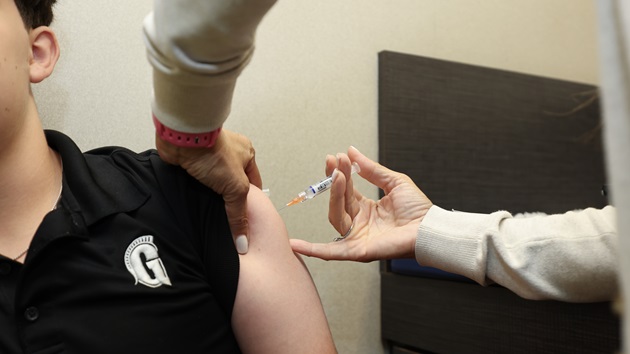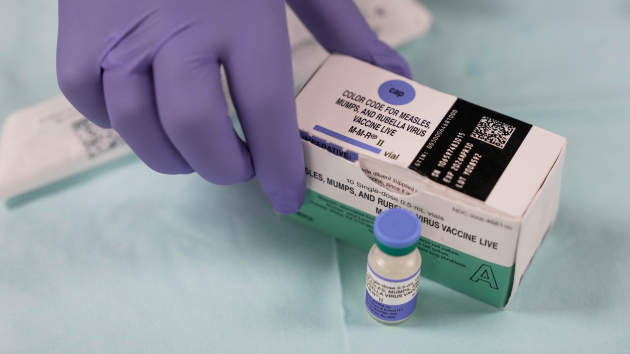Battery-sized heart pump shows potential in helping kids waiting for heart transplants
Written by ABC Audio All Rights Reserved on May 8, 2024

(NEW YORK) — New promising data finds that a small heart pump device the size of a AA battery could help keep children in need of a heart transplant alive and at home as they wait for a new heart.
With this small implantable device, children can go home until their transplant date instead of waiting weeks or months in a hospital.
The device is not yet approved by the U.S. Food and Drug Administration and will need more study. But experts say it’s a real medical advancement for hundreds of children with heart failure.
Every year, between 200 and 400 infants and children waiting for heart transplants are faced with a grueling option as they wait for a transplant, getting a surgically-implanted mechanical heart pump weighing up to 200 pounds with garden-hose sized tubing attached to their bodies, potentially for weeks or months until they receive a heart transplant.
Results published Tuesday in the Journal of Heart and Lung Transplantation have demonstrated that a miniature heart pump device called the Jarvik 2015 Ventricular Assist Device can be feasibly implanted in infants and children.
This feasibility study included seven children ages 8 months to 7 years old. The device is surgically implanted onto the heart, exits the body through a cable and is powered by a battery pack that is essentially worn as a belt.
Many of the children in the study spent many months using the device before their transplants. All seven children survived, however one child experienced a stroke on day 53 following device implantation.
Five children went on to receive heart transplants, one recovered without the need for heart transplant, and one required a different support device.
Notably, the children were able to participate in normal play activities, and most did not report feeling bothered by the device while sleeping or awake. This raises the potential for the implantable device, if approved for wider use, to be managed by patients and their family members at home while awaiting heart transplant news.
Currently, the only ventricular assist device for children whose hearts are failing is the Berlin Heart, which can weigh up to 200 pounds depending on the model and connects to a child using two large blood tubes the size of garden hoses.
As such, it requires complex care considering all its potential complications, including stroke, infection and blood clots, and patients are unable to go home with the device.
In these cases, children may endure weekslong to monthslong hospital stays with the Berlin Heart ventricular assist device attached to them while waiting for news of a donor heart.
“This is a huge step forward for implantable ventricular assist devices for young children,” Dr. Bradley Marino, executive co-director of the Pediatric and Adult Congenital Heart Center and division chief of Cardiology and Cardiovascular Medicine at Cleveland Clinic Children’s, who was not involved in the study, told ABC News.
“[The device] is a novel opportunity where we could have a new ventricular assist device that would allow infants and young children to potentially go home,” Marino said, adding that it could “potentially de-compress our cardiac intensive care units, which will allow for increased capacity, as well as provide an improved quality of life for the children and their families while they are waiting for heart transplantation at home.”
Though the study was suspended after the eighth patient consented to participate due to financial issues with the manufacturer, it has been given the green light to proceed onto the next steps and enroll 22 patients in a pivotal trial involving multiple major medical centers.
“If the pivotal trial shows that the Jarvik 2015 is safe and effective, this would be a huge advancement for the field, but we are likely years away from this being more widely applicable,” said Marino, noting the complexities of coordinating a multi-center pivotal trial and device manufacturing costs, among other barriers.
Marino also cautioned that it remains unclear how this device would perform in children with more complex heart anatomy, and since none of the children in the feasibility trial were discharged to home, it remains unclear if the device is safe for discharge.
Copyright © 2024, ABC Audio. All rights reserved.

 KVSP
KVSP 





